Kia Niro: Main Electronic Systems / General information
High Voltage System
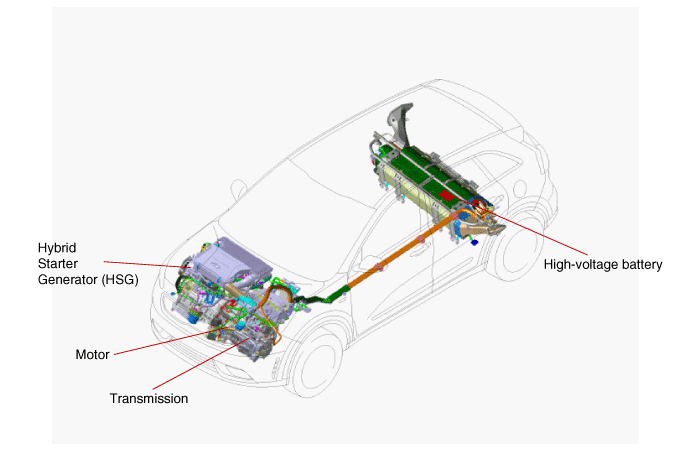
|
Motor |
Type |
Permanent magnet synchronous motor |
|
|
Max. Output (kW) |
32 |
||
|
Max Torque (Nm) |
170 |
||
|
HPCU |
Inverter |
Input Voltage(V) |
200 ~ 310 |
|
LDC |
Max. Output (kW) |
1.8 |
|
|
High Voltage Battery |
Type |
Lithium-ion polymer |
|
|
Rated Voltage (V) |
240 |
||
|
Capacity (Ah) / Energy (kWh) |
6.5 / 1.56 |
||
|
Quantity for Pack (Cell / Module) |
64CELLs / 4MODULEs |
||
Vehicle components
| 12V auxiliary battery |
The 12V auxiliary battery is located in the right side of the luggage room, and powers all of the vehicle’s standard electronics like radio, air conditioner, etc. Also, it powers the HPCU (Hybrid Power Control Unit) which controls high voltage current to main electronic systems like the motor.

| Motor |
The motor of the HEV converts electrical energy into propelling energy with a Max. power of 32 kW and Max. torque of 170 Nm.
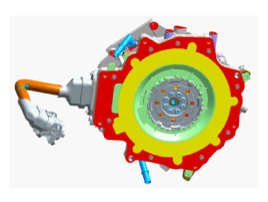
| Hybrid Power Control Unit (HPCU) |
The HPCU includes an Inverter and LDC (Low Power DC-DC Converter) in one housing. The inverter converts DC to AC to supply electricity to the motor.
It also converts AC to DC to charge the high voltage battery. The LDC transfers high voltage electricity to 12 voltage to charge 12V auxiliary battery.
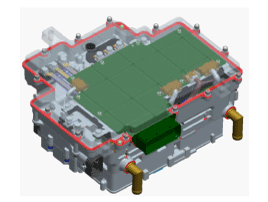
| High voltage battery system |
The High voltage battery system supplies and stores electric energy to traction motor and it is a Lithium ion polymer battery with specifications, 240V / 6.5Ah / 1.56kWh. It is located in the under the rear seat of the Niro.
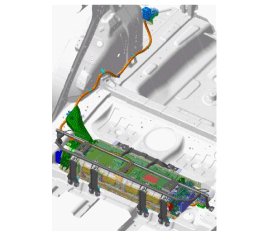
| Hybrid Starter Generator (HSG) |
The HSG restarts the engine at HEV mode and also charges the high voltage battery while driving, that is generator for hybrid vehicle.
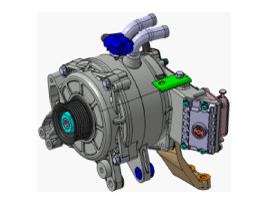
| High Voltage Orange Cabling |
The High Voltage cabling is orange per SAE standard. Cables run under the floor of the vehicle and connect the High Voltage Battery to the HPCU, Motor, LDC, Inverter and other High Voltage components at the front of the vehicle.
The presence of orange cables under the hood, on the under-floor battery compartment, or orange shielding under the car, identifies the vehicle as a HEV.
High Voltage Cables
Failure to follow these instructions can lead to death by electrical shock.
|
Airbag system (SRS: Supplemental Restraint System)
| Airbag |
Seven airbags are installed in the Niro, located in standard area of the vehicle so that the first responder can find them immediately. Before emergency procedure, make sure the vehicle ignition switch is turned off, disconnect the negative cable from the 12V auxiliary battery to prevent accidental deployment of undeployed airbags.
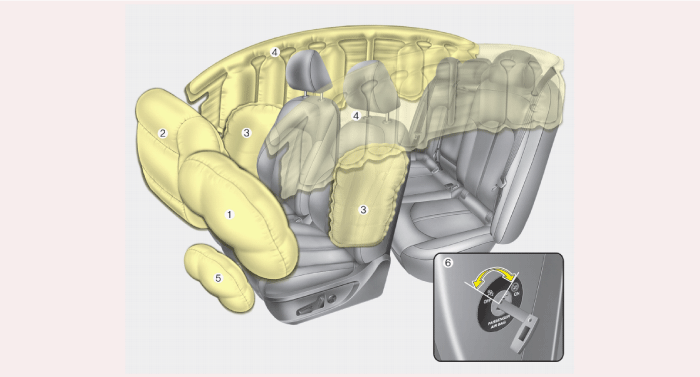
(1) Driver airbag
(2) Passenger airbag
(3) Side airbag
(4) Curtain airbag
(5) Driver’s knee air bag
(6) Passenger’s front airbag ON/OFF switch
? The actual air bags and seats in the vehicle may differ from the illustration.
| Seat Belt Pretensioner |
The Niro is equipped with driver’s and front passenger’s seat belts with pretensioners. When the seat belt pretensioners are activated in a collision, a loud noise may be heard and fine dust, which may appear to be smoke, may be visible in the passenger compartment. These are normal operating conditions and are not hazardous. The seat belt pretensioner assembly mechanisms may become hot during activation, and may need several minutes to cool after they have been activated.
| Airbag system components |
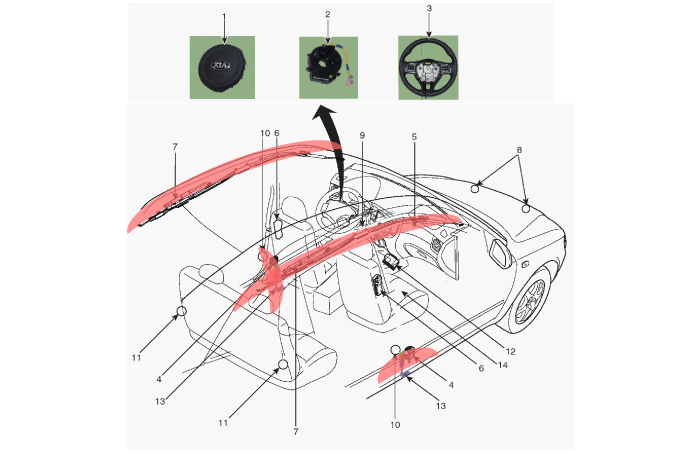
|
1. Driver Airbag (DAB) 2. Clock Spring 3. Steering Wheel 4. Seat Belt Pretensioner (BPT) 5. Passenger Airbag (PAB) 6. Side Airbag (SAB) 7. Curtain Airbag (CAB) |
8. Front Impact Sensor (FIS) 9. Knee Airbag (KAB) 10. Pressure Side Impact Sensor (PSIS) 11. Rear Side Impact Sensor (RSIS) 12. Supplemental Restraint System Control Module(SRSCM) 13. Emergency Fastening Device (EFD) 14. Occupant Classification System (OCS) |
Undeployed Airbags To avoid injuries caused by accidental deployment of undeployed airbags
Failure to follow any of these instructions may result in serious injury or death from accidental deployment of the airbag system. |
Other information:
Kia Niro (DE HEV) Owners Manual: Cruise Control system
■ Type A
■ Type B
1. Cruise indicator
2. Cruise set indicator
The cruise control system allows you to program the vehicle to maintain a constant
speed without pressing the accelerator pedal.
This system is designed to function above approximately 30 km/h (20 mph).
WARNING
If the ...
Kia Niro 2017 (DE HEV) Service Manual: Brake bleeding prcoedures
AHB Brake System Bleeding
procedure
•
Do not reuse the drained fluid.
•
Always use genuine DOT3/DOT4 brake Fluid. Usinga non-genuine
DOT3 ...





